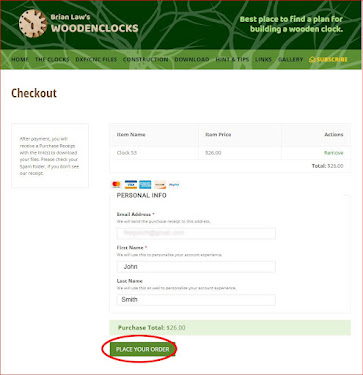I use Paypal to pay for the clock plans and files you purchase from me. I use it because it is an easy payment means for the buyer even if you don't have a Paypal account. It is not always obvious how to use it if you want to pay by credit card so I have added an explanation below.
Start by clicking on the payment button highlighted here.
You will need to supply an email address and your name so they know where to send the files once the purchase is complete.
Now click on the text highlighted so you can add your card details.
Finally, add your card and personal details
Press the Blue button at the bottom to complete the purchase.








